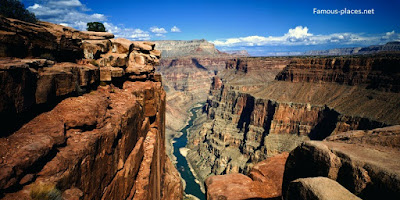Located in northern Arizona, the Grand Canyon is known
throughout the world for its size and colorful landscape. Measuring over 270
miles long, up to 18 miles wide and a mile deep, the canyon’s walls contain
rock layers that reveal a timeline of Earth’s history.
It has been a locale for
human use and occupation for millennia, with ruins and artifacts from
inhabitants dating back nearly 12,000 years, In the early 1800s, trappers and
expeditions sent by the U.S. government began to explore and map the canyon. It
was first afforded Federal protection in 1893 as a Forest Reserve and later a
National Monument, achieving National Park status in 1919.
Over 270 miles long, up to 18 miles wide and a mile deep,
the Grand Canyon is known throughout the world for its overwhelming size and
its intricate and colorful landscape. Located in northern Arizona, the
majestic vista is geologically important because the layers of ancient rocks so
beautifully preserved and exposed in the walls of the canyon reveal a timeline
of Earth’s history.
In the early 1800s, trappers and expeditions sent by the
U.S. government began to explore and map the Southwest, including the canyon.
Although first afforded Federal protection in 1893 as a Forest Reserve and
later as a National Monument, the Grand Canyon did not achieve National Park
status until 1919, three years after the creation of the National Park Service.
Today Grand Canyon National Park encompasses more than 1 million acres of land
and receives close to 5 million visitors each year.
history.com




Post a Comment